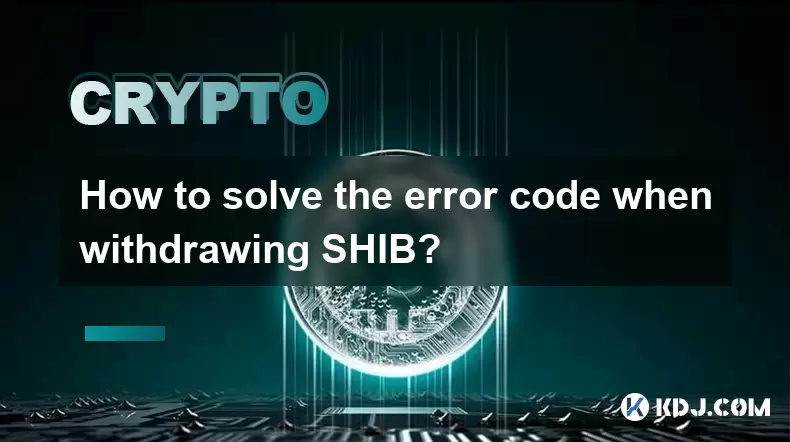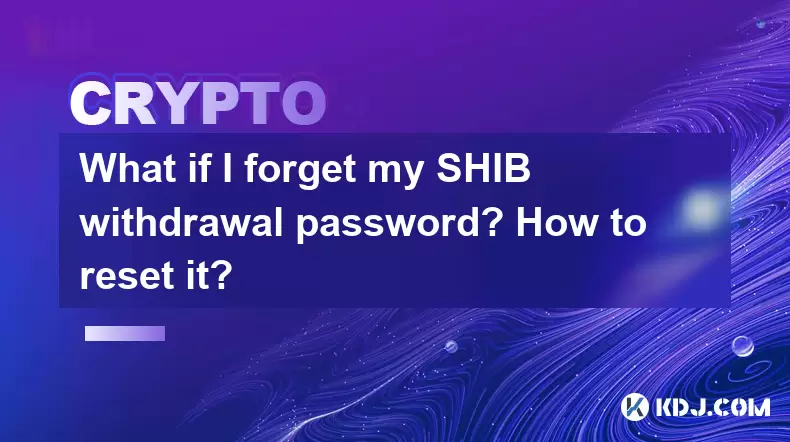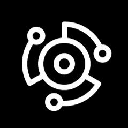-
 Bitcoin
Bitcoin $108,641.9143
0.44% -
 Ethereum
Ethereum $2,539.5956
0.97% -
 Tether USDt
Tether USDt $1.0007
0.04% -
 XRP
XRP $2.2777
2.50% -
 BNB
BNB $660.2073
0.79% -
 Solana
Solana $151.1059
2.08% -
 USDC
USDC $1.0004
0.05% -
 TRON
TRON $0.2838
-0.03% -
 Dogecoin
Dogecoin $0.1698
3.57% -
 Cardano
Cardano $0.5835
1.74% -
 Hyperliquid
Hyperliquid $39.4787
0.07% -
 Sui
Sui $2.9330
1.09% -
 Bitcoin Cash
Bitcoin Cash $489.1023
1.31% -
 Chainlink
Chainlink $13.3775
1.61% -
 UNUS SED LEO
UNUS SED LEO $9.0201
-0.04% -
 Avalanche
Avalanche $18.2176
2.06% -
 Stellar
Stellar $0.2417
1.98% -
 Toncoin
Toncoin $2.9355
7.33% -
 Shiba Inu
Shiba Inu $0.0...01181
3.23% -
 Litecoin
Litecoin $87.9775
1.54% -
 Hedera
Hedera $0.1569
1.54% -
 Monero
Monero $316.0995
1.13% -
 Polkadot
Polkadot $3.3970
1.36% -
 Dai
Dai $1.0002
0.02% -
 Ethena USDe
Ethena USDe $1.0002
0.00% -
 Bitget Token
Bitget Token $4.4094
0.33% -
 Uniswap
Uniswap $7.4035
6.32% -
 Pepe
Pepe $0.0...01016
4.88% -
 Aave
Aave $275.5935
1.55% -
 Pi
Pi $0.4565
-0.89%
How should you adjust your position when PEPE's volatility increases sharply?
When PEPE's volatility spikes, reduce exposure by selling a portion, using stop-loss orders, or diversifying; hedge with options or futures; or increase exposure via DCA or leveraged trading.
Apr 27, 2025 at 07:07 am

When dealing with a cryptocurrency like PEPE, which is known for its high volatility, it's crucial to have a strategy in place to manage your positions effectively, especially when volatility increases sharply. This article will guide you through the steps and considerations you should take to adjust your position when PEPE's volatility surges.
Understanding Volatility in PEPE
Volatility in the cryptocurrency market refers to the rate at which the price of an asset increases or decreases for a set of returns. For PEPE, a meme coin, volatility can be particularly pronounced due to its speculative nature and the influence of social media trends. When volatility increases sharply, it means that the price of PEPE is experiencing significant fluctuations over a short period. This can be both an opportunity and a risk for traders.
To understand the volatility of PEPE, you can use various tools and indicators such as the Bollinger Bands, Average True Range (ATR), or the Volatility Index. These tools help you gauge the extent of price movement and prepare for potential adjustments in your trading strategy.
Assessing Your Current Position
Before making any adjustments, it's essential to assess your current position in PEPE. Consider the following factors:
- Your Entry Price: How much did you pay for PEPE? This will help you determine your potential profit or loss.
- Your Risk Tolerance: Are you comfortable with the increased risk that comes with higher volatility?
- Your Investment Goals: Are you looking for short-term gains, or are you holding for the long term?
By evaluating these elements, you can better understand how the increased volatility might impact your position and what adjustments might be necessary.
Adjusting Your Position: Reducing Exposure
When PEPE's volatility spikes, one common strategy is to reduce your exposure to the asset. Here’s how you can do it:
- Sell a Portion of Your Holdings: If you believe the volatility might lead to a significant price drop, consider selling a portion of your PEPE to lock in profits or minimize potential losses. For example, if you hold 1000 PEPE, you might decide to sell 200 PEPE to reduce your risk.
- Use Stop-Loss Orders: Set stop-loss orders to automatically sell your PEPE if the price falls to a certain level. This can help protect your investment from significant downturns. For instance, if PEPE is trading at $0.00001, you might set a stop-loss at $0.000008.
- Diversify: Consider reallocating some of your funds to less volatile assets to balance your portfolio. This can help mitigate the risk associated with holding a highly volatile asset like PEPE.
Adjusting Your Position: Hedging
Another way to manage increased volatility is through hedging. Hedging involves taking positions that will offset potential losses in your PEPE holdings. Here are some hedging strategies:
- Options Contracts: You can buy put options on PEPE, which give you the right to sell PEPE at a predetermined price. If the price of PEPE falls, the put option can help you recover some of your losses.
- Futures Contracts: Similar to options, futures contracts allow you to agree to sell PEPE at a future date at a set price. This can protect you against price drops.
- Inverse ETFs: If available, inverse ETFs that move in the opposite direction of PEPE can be used to hedge your position. However, these are less common in the cryptocurrency market.
Adjusting Your Position: Increasing Exposure
While it might seem counterintuitive, some traders choose to increase their exposure to PEPE during periods of high volatility. This strategy is based on the belief that volatility can lead to significant price movements, offering opportunities for profit. Here’s how you might do it:
- Dollar-Cost Averaging (DCA): Instead of investing a lump sum, you can spread your investment over time. For example, if you have $1000 to invest in PEPE, you might decide to buy $100 worth of PEPE every day for 10 days. This can help you buy more PEPE at lower prices during volatile periods.
- Leveraged Trading: Using leverage can amplify your returns, but it also increases your risk. If you believe PEPE will rise despite the volatility, you might use leverage to increase your position. However, be cautious as this can lead to significant losses if the market moves against you.
- Scalping: This involves making quick trades to take advantage of small price movements. During high volatility, scalping can be profitable, but it requires constant monitoring and quick decision-making.
Monitoring and Reassessing
After making adjustments to your position, it’s crucial to monitor the market and reassess your strategy regularly. High volatility can lead to rapid changes in market conditions, so staying informed and flexible is essential. Use the following steps to monitor and reassess:
- Keep an Eye on Market News: Stay updated with news and events that might affect PEPE's price. Social media platforms like Twitter and Reddit can provide real-time insights into market sentiment.
- Use Technical Analysis: Continuously analyze price charts and technical indicators to understand the current market trend and potential future movements.
- Review Your Position: Periodically review your position in PEPE to ensure it aligns with your risk tolerance and investment goals. If the market conditions change, be prepared to make further adjustments.
Frequently Asked Questions
Q: Can I use the same strategy for other volatile cryptocurrencies?
A: While the strategies discussed in this article can be applied to other volatile cryptocurrencies, it's important to consider the unique characteristics of each asset. For example, the liquidity and market sentiment around a coin like Dogecoin might differ significantly from PEPE, requiring tailored adjustments to your strategy.
Q: How can I predict when PEPE's volatility will increase?
A: Predicting volatility with certainty is challenging, but you can look for signs such as increased trading volume, significant news events, or shifts in market sentiment. Tools like the Volatility Index can also help you anticipate potential increases in volatility.
Q: Is it better to hold PEPE through periods of high volatility or adjust my position?
A: This depends on your risk tolerance and investment goals. If you're comfortable with the risk and believe in the long-term potential of PEPE, holding through volatility might be suitable. However, if you're more risk-averse or looking for short-term gains, adjusting your position as outlined in this article could be a better approach.
Q: What are the tax implications of frequently adjusting my position in PEPE?
A: The tax implications of trading cryptocurrencies can vary by jurisdiction. In many places, selling or trading PEPE may be subject to capital gains tax. It's advisable to consult with a tax professional to understand the specific implications in your area and ensure compliance with local tax laws.
Disclaimer:info@kdj.com
The information provided is not trading advice. kdj.com does not assume any responsibility for any investments made based on the information provided in this article. Cryptocurrencies are highly volatile and it is highly recommended that you invest with caution after thorough research!
If you believe that the content used on this website infringes your copyright, please contact us immediately (info@kdj.com) and we will delete it promptly.
- Litecoin Breakout Watch: What Traders Need to Know Now
- 2025-07-06 16:50:13
- Bitcoin, Solana, Ethereum: Decoding the Latest Buzz on the Blockchain
- 2025-07-06 16:50:13
- Widnes Resident's 50p Could Be Your Ticket to Easy Street: Rare Coin Mania!
- 2025-07-06 16:55:13
- Bitcoin, Solaris Presale, and Token Rewards: What's the Buzz?
- 2025-07-06 16:55:13
- Ethereum Under Pressure: Price Drop Amid Global Uncertainties
- 2025-07-06 17:00:13
- XRP, SEC Case, and Prosperity: A New Era for XRP Holders?
- 2025-07-06 17:10:13
Related knowledge

How to solve the error code when withdrawing SHIB?
May 14,2025 at 02:22am
Understanding Error Codes When Withdrawing SHIBWhen you attempt to withdraw Shiba Inu (SHIB) from an exchange or wallet, you might encounter various error codes. Understanding these error codes is crucial to successfully completing your transactions. Error codes are typically generated to inform users of specific issues that need to be addressed before ...

Can the SHIB withdrawal address be reused? Is it safe?
May 13,2025 at 04:42pm
Introduction to SHIB Withdrawal AddressesWhen it comes to Shiba Inu (SHIB) transactions, one of the critical aspects users need to understand is the nature and safety of withdrawal addresses. The SHIB withdrawal address plays a pivotal role in ensuring that your tokens are transferred securely from one wallet to another. A common question among users is...

What is the minimum withdrawal amount for SHIB? Is there a threshold?
May 13,2025 at 03:29pm
When it comes to withdrawing SHIB (Shiba Inu) from various cryptocurrency platforms, understanding the minimum withdrawal amount and any associated thresholds is crucial for managing your transactions efficiently. This article will delve into the specifics of SHIB withdrawals, focusing on the minimum amounts required, how these thresholds are set, and w...

What to do if the SHIB withdrawal network is congested? Can it be cancelled?
May 13,2025 at 05:07pm
If you're facing issues with the SHIB withdrawal network being congested, it's important to understand your options and the steps you can take. Congestion in the network can lead to delays in transaction processing, and knowing whether you can cancel a pending transaction is crucial. Let's explore this topic in detail. Understanding SHIB Withdrawal Netw...

Does SHIB withdrawal support ERC20? How to choose?
May 14,2025 at 02:56am
Does SHIB withdrawal support ERC20? How to choose? Shiba Inu (SHIB) is a popular cryptocurrency that often raises questions about its withdrawal options, particularly in relation to the ERC20 token standard. This article will explore whether SHIB withdrawal supports ERC20 and provide a detailed guide on how to choose the best withdrawal method for your ...

What if I forget my SHIB withdrawal password? How to reset it?
May 13,2025 at 03:15pm
Forgetting your SHIB withdrawal password can be a stressful experience, especially if you are eager to access your funds. Fortunately, there are steps you can take to reset your password and regain access to your SHIB. This article will guide you through the process of resetting your SHIB withdrawal password, ensuring that you can continue to manage you...

How to solve the error code when withdrawing SHIB?
May 14,2025 at 02:22am
Understanding Error Codes When Withdrawing SHIBWhen you attempt to withdraw Shiba Inu (SHIB) from an exchange or wallet, you might encounter various error codes. Understanding these error codes is crucial to successfully completing your transactions. Error codes are typically generated to inform users of specific issues that need to be addressed before ...

Can the SHIB withdrawal address be reused? Is it safe?
May 13,2025 at 04:42pm
Introduction to SHIB Withdrawal AddressesWhen it comes to Shiba Inu (SHIB) transactions, one of the critical aspects users need to understand is the nature and safety of withdrawal addresses. The SHIB withdrawal address plays a pivotal role in ensuring that your tokens are transferred securely from one wallet to another. A common question among users is...

What is the minimum withdrawal amount for SHIB? Is there a threshold?
May 13,2025 at 03:29pm
When it comes to withdrawing SHIB (Shiba Inu) from various cryptocurrency platforms, understanding the minimum withdrawal amount and any associated thresholds is crucial for managing your transactions efficiently. This article will delve into the specifics of SHIB withdrawals, focusing on the minimum amounts required, how these thresholds are set, and w...

What to do if the SHIB withdrawal network is congested? Can it be cancelled?
May 13,2025 at 05:07pm
If you're facing issues with the SHIB withdrawal network being congested, it's important to understand your options and the steps you can take. Congestion in the network can lead to delays in transaction processing, and knowing whether you can cancel a pending transaction is crucial. Let's explore this topic in detail. Understanding SHIB Withdrawal Netw...

Does SHIB withdrawal support ERC20? How to choose?
May 14,2025 at 02:56am
Does SHIB withdrawal support ERC20? How to choose? Shiba Inu (SHIB) is a popular cryptocurrency that often raises questions about its withdrawal options, particularly in relation to the ERC20 token standard. This article will explore whether SHIB withdrawal supports ERC20 and provide a detailed guide on how to choose the best withdrawal method for your ...

What if I forget my SHIB withdrawal password? How to reset it?
May 13,2025 at 03:15pm
Forgetting your SHIB withdrawal password can be a stressful experience, especially if you are eager to access your funds. Fortunately, there are steps you can take to reset your password and regain access to your SHIB. This article will guide you through the process of resetting your SHIB withdrawal password, ensuring that you can continue to manage you...
See all articles

























































































